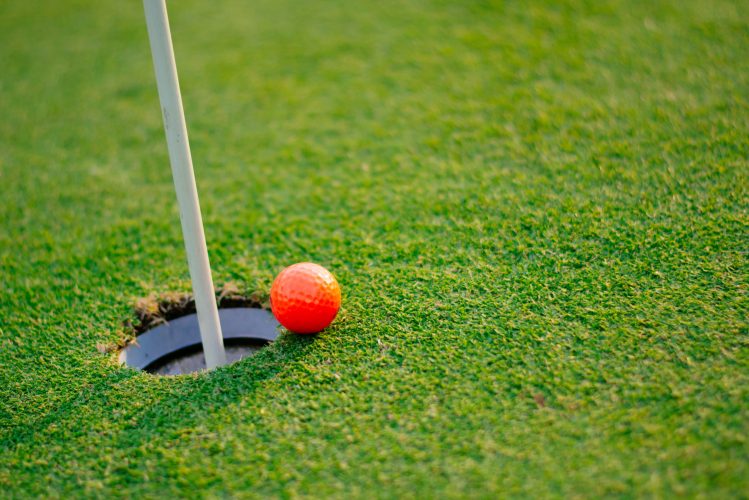In elite sports, the difference between greatness and disappointment is often a matter of inches. A fingertip catch in the World Series, a photo-finish at the Kentucky Derby, or a shot in the Stanley Cup finals that rings off the post. These are the moments that separate champions from the rest. At the highest levels, where everyone is physically gifted, it is not just about strength, speed, or skill. The margins are razor-thin, and every inch counts.
Just ask Michael Phelps, who won the 100m butterfly at the 2008 Olympics by one one-hundredth of a second over Milorad Čavić. Or consider the 2022 NFL playoffs, when the Kansas City Chiefs beat the Buffalo Bills in overtime after a 13-second drive that covered just enough inches to tie the game. These moments illustrate how elite sports are defined not by dominance, but by the slimmest of margins.
While physical distances matter, perhaps the most critical inches in sport are the ones that cannot be measured by football chains, video replay, or a photo finish. They are the inches between your ears, the mental space where self-belief, focus, fear, and pressure collide. At the highest level, talent is a given. What often distinguishes the champions from contenders is the strength of the mind.
The history of sports is rich with examples of mental collapses that underscore this truth. Greg Norman’s infamous collapse at the 1996 Masters is a textbook case. Starting the final round with a six-shot lead, Norman unraveled under pressure, shooting a 78 and losing by five strokes to Nick Faldo. In tennis, Jana Novotná crumbled at Wimbledon in 1993, losing a 4–1 lead in the final set to Steffi Graf. She had to wait five years before claiming her first Wimbledon title.
Yet, just as sport has shown us how mental fragility can bring down the best, it also showcases incredible resilience. Serena Williams has bounced back from injury, childbirth, and media scrutiny to remain one of the greatest tennis players in history. Michael Jordan famously used perceived slights to fuel his legendary playoff performances. The 2004 Boston Red Sox overcame a 0–3 deficit against the Yankees in the ALCS thanks in large part to their collective belief and mental fortitude.
This year’s Masters Tournament offered a fresh reminder of how the mind can either be a battleground or a sanctuary. Rory McIlroy, long haunted by past disappointments at Augusta, delivered one of the most composed and mentally resilient performances of his career. With critics circling and the weight of nearly a decade of major-less seasons on his shoulders, McIlroy stayed present, focused, and calm despite his fair share of ups and downs. His final round 73 included six birdies, three bogeys, and two double bogeys, causing him to see numerous leaderboard changes. Yet, when it mattered most, he stuck an iron within 3 feet on the 17th, controlled damage after a wedge shot found the sand on the 18th, and on the first playoff hole hit the same wedge shot that found that sand 15 minutes earlier within two feet of the hole for a tap in put and a place in the history books. He is now one of six male golfers to win all four major championships – joining Gene Sarazan, Ben Hogan, Gary Player, Jack Nicklaus, and Tiger Woods.
This brings us to an often overlooked but increasingly vital part of elite sports. How do we prepare elite athletes for the pressures they will face from fans, the media, coaches, and themselves. The College of Social Work (CoSW) at the University of Kentucky believes one piece to this puzzle is the involvement of sport social workers. As mental health professionals embedded in athletic environments, sport social workers help athletes prepare not just physically but psychologically. They understand the unique pressures that come with elite performance. This includes the impact of athletic identity, mental toughness, sport culture, and the strain of expectation. Much like in other areas of social work practice, sport social workers highly trained in building the mental and emotional resilience that athletes need to perform under pressure.
Sport social workers proactively equip athletes with the tools they need long before the final hole or the fourth quarter. From mindfulness training to emotional regulation strategies, from building a positive team culture to ensuring athletes have access to comprehensive mental health services, their role is expansive and essential. To learn more about sport social work check out the Alliance of Social Workers in Sports, the Sport Social Work Journal, and the CoSW International Institute for Sport and Behavioral Health.
Remember, inches can be the difference in sport. But the most important inches are not the ones that separate a win from a loss. They are the ones inside the athlete’s mind. As we continue to push for peak performance in sport, we must also invest in the people who help athletes manage those crucial mental margins. Because in the end, winning the game starts with winning the battle between your ears.






